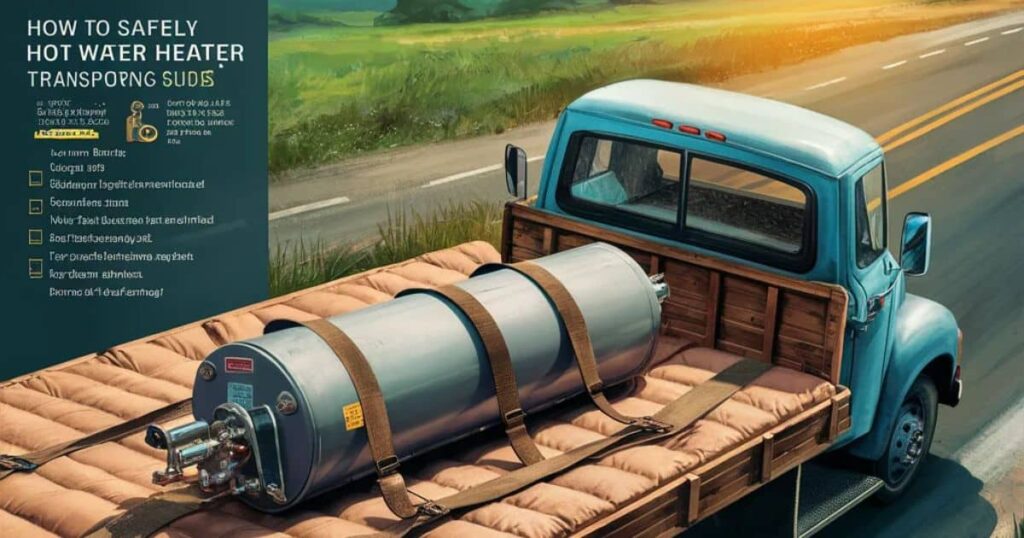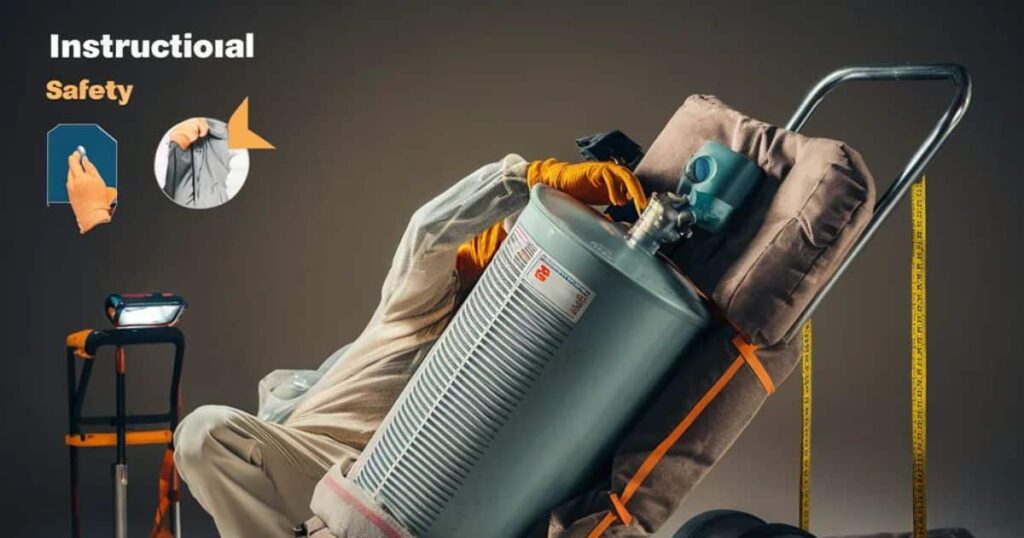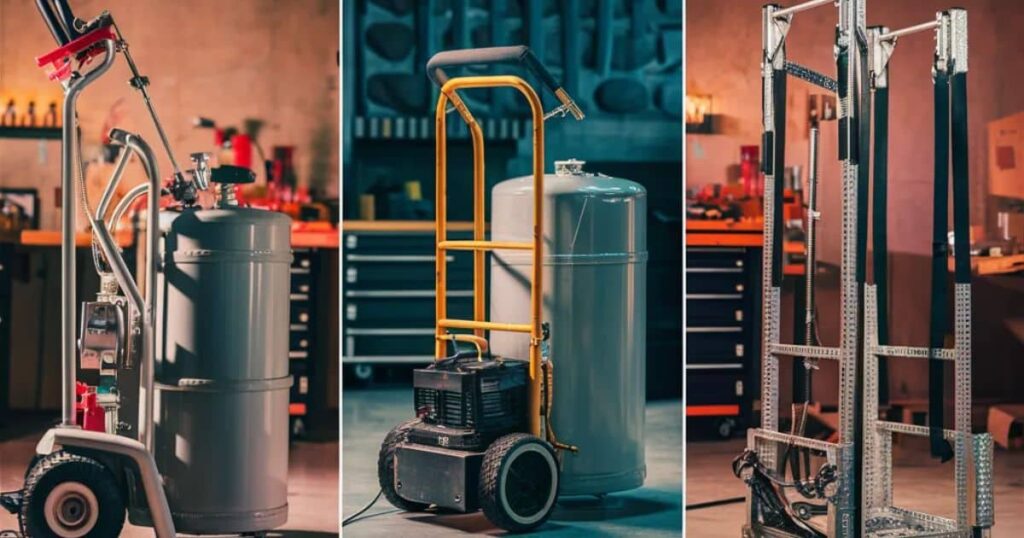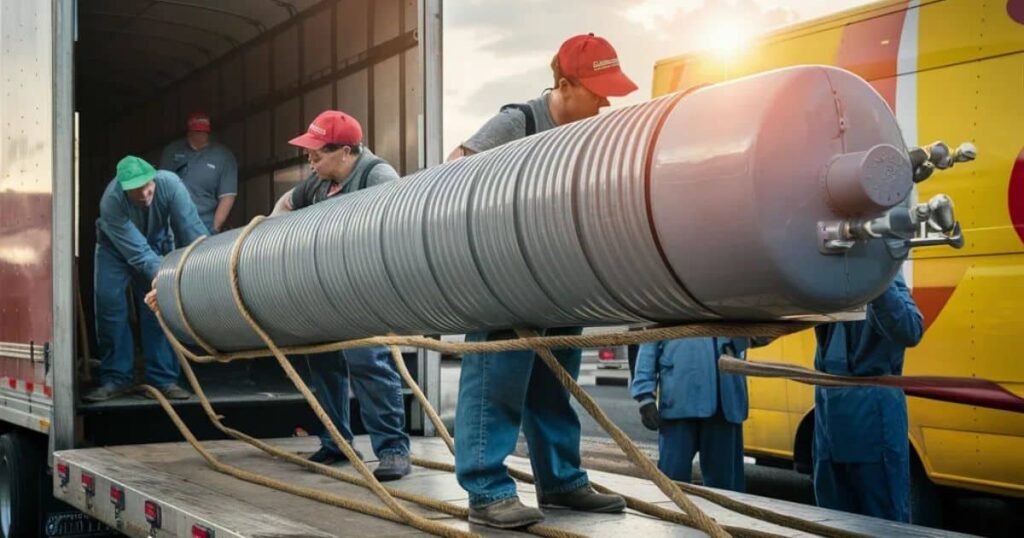Moving a hot water heater is no simple task. These bulky appliances are heavy, awkwardly shaped, and often located in tight spaces. At some point, you may be faced with the dilemma of whether you can transport your water heater on its side or if it must remain upright.
The answer isn’t so straightforward – while it is possible to lay a hot water heater down for transport, it comes with significant risks that could lead to costly damage if not done with extreme care.
In this comprehensive guide, we’ll cover everything you need to know about safely transporting a hot water heater horizontally, including the potential dangers, step-by-step instructions, and expert tips for proper preparation and inspection.
We’ll also discuss alternatives like hiring professional movers or selling to a cash home buyer if the DIY approach seems too daunting.
The Dangers of Laying a Water Heater Down
The primary reason you want to avoid laying a hot water heater on its side is to prevent internal damage that could render the unit inoperable or severely compromise its efficiency and lifespan. Specifically:
- Internal components can break: Items like the gas valve, heating elements, thermostats, and sacrificial anode rods are designed to function in an upright position. Laying a water heater horizontally can cause these components to break free from their moorings or shift out of alignment.
- Insulation can shift: Water heater tanks are insulated to retain heat and reduce energy costs. If transported on its side, this insulation can settle and become unevenly distributed, leading to hot and cold spots that impair performance.
- Leaks and flooding risks: Any remaining water sloshing around inside could leak out through fittings and valves that weren’t designed for that orientation. Even a small leak can cause major water damage if not caught immediately.
- Premature malfunctions: According to homeadvisor.com, improper handling is one of the top reasons for residential water heater breakdowns. The average cost for repairing a malfunctioning water heater is a staggering $492, with complete replacements running $872-$2,422 on average.
While many homeowners successfully lay their water heaters down during transport, it only takes one misstep to transform the situation into an expensive headache. Extreme caution is critical.
How to Safely Transport a Hot Water Heater Laying Down

If laying your water heater on its side is absolutely unavoidable due to space constraints or stairway access, there are some essential steps you must take to minimize risks:
- Drain the tank completely: Don’t rely on just the drain valve. Open the pressure relief valve as well to ensure every last drop of water is evacuated from the tank interior.
- Disconnect all attachments: Carefully detach the gas line, power supply, supply pipes, and any other connected components according to your model’s instructions. Secure any loose parts.
- Use proper cushioning: Pad the sides and top of the tank generously with blankets, moving pads, or foam cushions to prevent dents, dings, or interior component shifts.
- Lay it on a non-abrasive surface: If you must lay the tank on its side, do so very gently on a soft, non-abrasive surface like a blanket or fresh patch of lawn.
- Minimize jostling during transport: Load the tank securely into your vehicle using straps, dollies, and helping hands as needed. Avoid jarring bumps, drops, or excessive shaking at all costs.
These steps won’t eliminate all risk, but they can dramatically reduce the chances of inflicting serious damage during the horizontal transport.
Step-by-Step Instructions:
- Drain the tank fully:
- Turn off the gas/power supply and water inlet
- Attach a garden hose to the drain valve and open it
- Open the pressure relief valve as well to aid draining
- Leave the valves open to ensure all water evacuates
- Disconnect all attachments:
- Refer to your model’s instructions
- Detach gas line, power supply, hot/cold supply pipes
- Secure all loose parts like valves or wiring harnesses
- Use proper cushioning:
- Generously pad the tank sides and top
- Use thick blankets, foam cushions, or moving pads
- This prevents dents, scratches, and shields internal parts
- Gently lay it on a non-abrasive surface:
- Lower it slowly and carefully onto its side or back
- A lawn, blanket or cardboard works well
- Avoid hard, abrasive surfaces that could scratch
- Minimize jostling during transport:
- Use straps, dollies, helping hands as needed
- Load securely into vehicle to prevent shifting
- Avoid bumps, drops, or excessive shaking at all costs
Have an extra set of hands to help with the bulky, awkward movements. Proper lifting technique is crucial to avoid back injuries!
Read this Post: TESLA HOMES: WHEN CAN I BUY A TESLA HOUSE? JUNE 2024
Preparing the Water Heater for Moving
Even before you get to the transport stage, there are some critical preparation steps that will make the process safer and easier:
- Drain the tank: As mentioned, completely draining the tank prevents water damage if any spills or leaks occur. It also significantly reduces the overall weight you’ll be dealing with.
- Disconnect all components: Unhooking the gas, power, and plumbing lines is a must to allow free movement of the tank. This prevents putting unnecessary strain on fittings and joints.
- Gas Line: Turn off the gas supply and use two wrenches to unscrew the connection. Inspect for any debris or rust.
- Power Supply (Electric models): Flip the breaker and disconnect the power cable junction or conduit.
- Water Lines: Shut off the cold water supply valve and disconnect the hot/cold water lines. Have buckets ready to catch any residual water.
- Use proper moving equipment: Invest in a quality appliance dolly with safety straps. You may also need lifting hooks, moving blankets/pads, gloves and back braces.
The Buddy System is Essential
Unless your water heater is a compact tankless model, you’ll definitely want a friend to help with the heavy lifting and maneuvering. The buddy system provides:
- Extra muscle power: A standard 40-50 gallon tank can weigh 300-500 lbs when full. Having a partner prevents injuries from overexertion.
- Balancing the load: The rounded, cylindrical shape makes water heaters unbalanced and prone to tipping. Two people maintain better control.
- Navigating obstacles: Whether it’s tight spaces, stairs, or just getting it onto the dolly, an extra set of hands is invaluable.
As with any heavy lifting, always use proper technique by lifting with your legs, not your back. And never stack heavy items on top of the water heater, as that could cause catastrophic damage.
Inspecting for Damage After Relocation

You’re not out of the woods just yet! Once your water heater has arrived at its destination, it’s crucial to thoroughly inspect for any signs of damage that could have occurred during transport:
- Listen for rattling or loose parts: Shake the tank gently and listen closely for the sounds of any components knocking around loose inside.
- Visually check for dents, cracks, or leaks: Carefully examine the exterior for any fresh dings, dents, or cracks that could indicate an impact occurred. Also check all fittings, seams, and joints for any signs of moisture or active leakage.
- Smell for gas leaks (gas-powered models): If your water heater runs on gas, use your nose to detect any whiffs of rotten egg odors that signal a gas line or valve has been compromised.
If everything looks and sounds secure, then you can slowly proceed to reconnect all the components like the gas, power, and water lines exactly according to the installation manual.
Take it slowly and double check your work, as overlooking a loose connection now could lead to disaster later.
Once fully reconnected, you’ll then want to restart the water heater and monitor closely for:
- Active leaks: Use a flashlight to check over every connection point, valve, and seam for any sign of moisture that could indicate an active leak.
- Odd sounds: Listen closely for any gurgling, knocking, or whining sounds that shouldn’t be present and could signal internal damage.
- Impaired heating performance: Make a note if the water isn’t heating as quickly or to the expected temperature as it did pre-move.
Any of those issues are red flags that hidden internal damage may have occurred during the relocation process.
When to Call in a Professional
While a careful DIY transport of your water heater laying down is possible, there are situations where it’s best to call in professional help:
- If you notice any signs of damage during inspection: Odd noises, leaks, heating issues or visible dents/cracks after relocation are all red flags that the unit may have sustained internal damage during the move. Having a licensed plumber or appliance technician inspect it can identify issues before they turn into bigger disasters.
- For added peace of mind: Even if everything seems fine, the complexity of water heater systems means there could be hard-to-detect issues. Many homeowners opt to have a professional give it a once-over after relocation just to verify safe operation.
- You lack equipment or extra hands: If you don’t have access to an appliance dolly, moving blankets, or an extra set of hands to assist, the risks of going it alone increase exponentially. Professionals come equipped with the right tools and team.
- There are complicated obstacles: Tight spaces, flights of stairs, narrow doorways or having to maneuver the tank outdoors can dramatically increase the difficulty level. Experienced movers are trained to handle these challenges.
The up-front costs of hiring pros may sting, but it could save you from disastrous water damage, safety hazards, or needing to replace the entire water heater down the line.
Filing an Insurance Claim for Water Heater Damage
If the worst happens and your water heater is damaged beyond repair during a DIY move, you may be able to file a homeowner’s insurance claim to reimburse you for replacement costs. However, the claims process requires:
- Documenting the damage with photos/videos as evidence
- Proof of ownership like receipts for the damaged unit
- Adherence to your policy terms, which may not cover mishandling
Even if your claim is approved, there are typically deductibles of $500-$2,000 that you’d need to cover out-of-pocket. The frustrations of making a claim, plus the interim lack of hot water, may make the hassle not worth it for many homeowners.
Alternatives to DIY Water Heater Transport

For those who want to avoid the considerable risks of attempting a horizontal water heater transport themselves, there are some convenient alternative options:
Hire Professional Appliance Movers
Companies that specialize in appliance removals, installations, and transport have the right equipment like extension trucks, lifting equipment, and experienced manpower to handle even the most difficult water heater jobs safely. While more costly, it guarantees the job is done right.
Sell Your Home to a Cash Buyer
Are you already planning to move and dread the hassle of dealing with your old water heater? Companies like Cash Home Buyer will purchase properties in any condition, eliminating your need to repair or remove those old or damaged appliances like water heaters.
Rather than fussing with draining tanks, disconnections, and potentially inflicting damage during DIY transport, a direct home sale lets you just take the cash and walk away without any hassle or liability.
For those who don’t want to deal with the headaches of prepping and moving a hot water heater themselves, either of those options can be a convenient solution.
The Bottom Line: Lay it Down With Extreme Caution
So can you transport a hot water heater laying down? The definitive answer is: Yes, but only if you follow a strict set of preparation and handling protocols. Even then, there are still inherent risks of inflicting costly damage to internal components if not done with complete care.
Unless you have experience working with water heater systems and tank transport, attempting this task as a DIY is generally not recommended by professional plumbers. The costs, time, and safety hazards of repairing an improperly moved water heater often outweigh any benefits of doing it yourself.
However, if you are committed to the horizontal transport method, the information and step-by-step instructions in this guide should allow you to execute it as safely as possible. Just be sure to thoroughly inspect for any signs of damage after relocation and have a professional verify everything is functioning correctly.
For added convenience and peace of mind, alternatives like professional appliance movers or direct home sales to a cash buyer may be worthwhile options to explore as well.
No matter which route you choose, prioritize your safety and don’t take any unnecessary risks when it comes to moving such a crucial home appliance! Stay safe, hire help if needed, and enjoy warm water for years to come.







